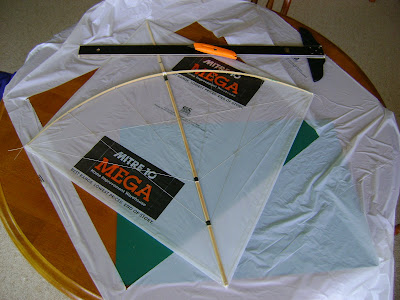A Malaysian fighting kite is highly manouverable. It has no tail and can be moved sideways or up and down at will. The string used for flying it, has been specially treated. It is an elaborate process using a secret concoction of glue and powdered glass on a line (No: 40 or 60 Anchor).
The attacking kite is flown from a location upwind of the target. As the kite swoops down out of the sky, its line intercepts the target's line. At the instant of contact (or slightly before that) the attacker's line is allowed to move at speed forward across the target line, acting like a saw, thus cutting his line. The victim's kite floats away free and is picked up by any one waiting some distance down wind (finders/keepers!).
Participants consists of two groups. Those with kites and those without. I remember the exciting time we had as children waiting down wind and running after the kites. The older children flying the kites are equally excited about winning! The winner is the kite left flying after an "encounter" with an opponent in the sky.
The attacking kite is flown from a location upwind of the target. As the kite swoops down out of the sky, its line intercepts the target's line. At the instant of contact (or slightly before that) the attacker's line is allowed to move at speed forward across the target line, acting like a saw, thus cutting his line. The victim's kite floats away free and is picked up by any one waiting some distance down wind (finders/keepers!).
Participants consists of two groups. Those with kites and those without. I remember the exciting time we had as children waiting down wind and running after the kites. The older children flying the kites are equally excited about winning! The winner is the kite left flying after an "encounter" with an opponent in the sky.






